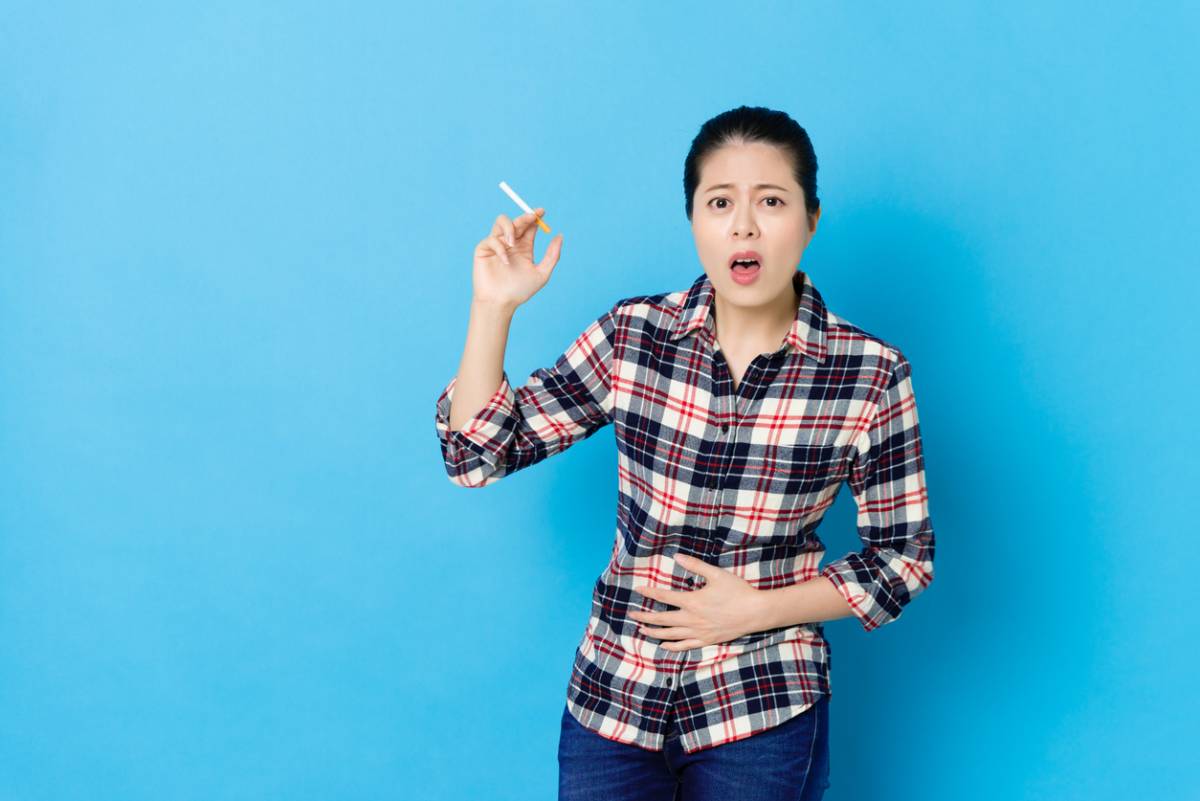At least 70 of the 5000 plus chemicals released by cigarette smoke are directly linked to an increased risk of cancer. These are known as carcinogens, and they use your lungs as an entry point before traveling throughout your body. Once inside, a carcinogen can increase your risk of cancer in two ways, depending on its form. It may alter your cellular metabolism to increase the rate of cell division, or it may actually damage your DNA. Both of these result in a change to normal cellular processes and increase the chance of mutations, which could result in the development of cancer. Let’s look at the relationship between smoking and breast cancer risk.
Smoking and Breast Cancer Risk
This is why smoking is regularly associated with increased cancer rates, especially in the lungs where the carcinogens are immediately received. Unfortunately, that isn’t where they stay. The carcinogens introduced to your body use the respiratory system to gain access to your circulatory system, which can take them anywhere in your body. As a result, smoking may increase the risk of cancer in premenopausal women by as much as 35%. With that harrowing statistic in mind, let’s take a few minutes to discuss breast cancer prevention.
General Breast Cancer Prevention
Cancer cannot always be prevented. However, there are steps we can take to minimize the risks of developing cancer as well as the risks of dealing with late-stage cancer. These steps can be broken down into four distinct parts: diet, environment, exercise, and regular exams.
Diet:
Your body’s natural defenses work best when you give it the fuel it needs. Try maintaining a healthy weight and consuming a nutrient-rich diet. This way, you ensure your immune system works at optimal capacity. In fact, many studies show that diverse, plant-rich diets propped up by whole grains and beans can actually help to prevent cancer from initially developing.
Environment:
Second-hand smoke and pollution have both been tied to increased levels of cancer risk. Now, we can’t all choose to live or work in areas with clean air and water. That is a privilege that many people cannot afford. However, you may minimize your risk by installing an air filter at home. Also, try wearing a mask to work if you risk exposure to intense pollution. If you are the one who smokes, then you should consider talking to your doctor about local smoking cessation programs.
Exercise:
You don’t have to be a gym rat to be healthy. For the average adult 150-300 minutes of moderate activity per week is perfectly adequate for maintaining your health. To put that in perspective, a brisk 30-minute walk once per day is 210 minutes per week. As long as you’re consuming a healthy diet that should be enough to help you maintain your health.
Examinations:
Self-examinations and, eventually, regular mammograms are the final key to protecting your health when other forms of breast cancer prevention cannot protect you. Even young women should be performing a self-examination about once per month to check for abnormal lumps and bumps. This can be challenging at first because breasts are naturally lumpy, but getting to know how your mammary glands normally feel makes it much easier to notice something out of place down the road.
When You Find a Lump
Did you find a lump or anything else abnormal in or around your breast? Then your first step should be to contact your doctor. Through physical examination, blood tests, imaging, and sometimes a biopsy your doctor will be able to tell whether or not the abnormality you found is anything to worry about. If it is cancer, take a deep breath and call your local breast cancer surgeon in Austin. Thanks to modern medicine you have so many more options than your mother’s generation. Together, you and your surgeon will find a solution that works for you while keeping you safe.

